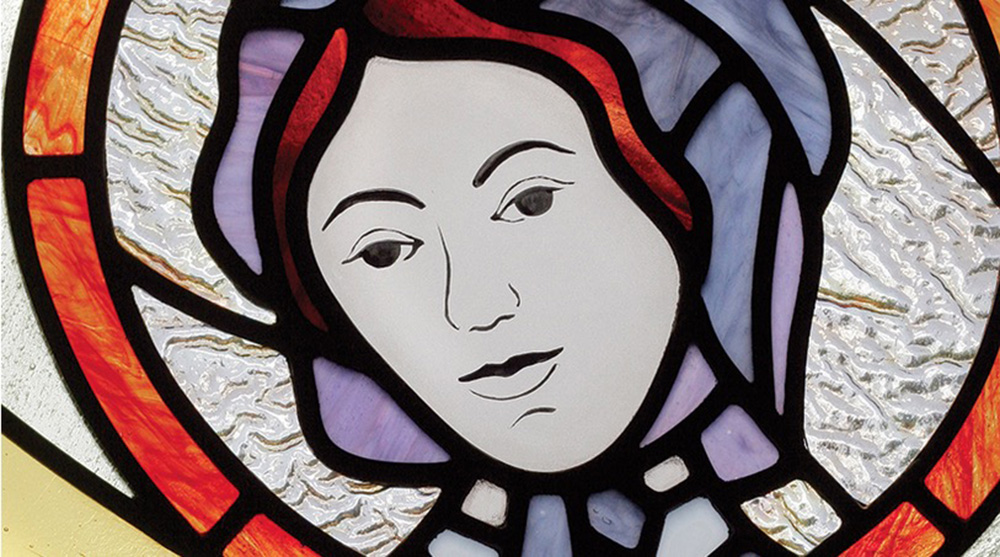Imagine the suffering of a 29-year-old American widow returning home from Italy, having just buried her husband. Underneath the pain, she couldn’t have guessed this, amazingly, was an integral part of God’s plan. Unknown to her, St. Elizabeth Ann Seton was on the path to becoming the first canonized saint born on American soil.
The daughter of a physician, born in New York City in 1774, 3-year-old Elizabeth was acquainted with suffering early with her mother’s death. She married a wealthy importer, William Seton, in 1794, and together they had five children. Stress from the bankruptcy of his business in 1802 worsened William Seton’s existing tuberculosis, and doctors prescribed the Italian climate. Elizabeth didn’t leave his side until his death in an Italian quarantine two days after Christmas in 1803. The couple originally planned to stay with his business partners in Italy, and the young widow enjoyed their hospitality until she could return to America. The Filicchi family home had a private chapel, and there Elizabeth had her first experience of Catholicism. Her life was forever changed.
Fascinated by the Church’s liturgy and the Real Presence, the committed Protestant who went to Italy would soon return to America with a Catholic heart.
Antonio Filicchi helped Seton informally begin her study of the Faith on the voyage to New York.
Seton’s conversion to Catholicism brought about many hardships. Hostility from her family was just the beginning of her sufferings in an anti-Catholic New York City. Seton made the Profession of Faith and received her first holy Communion in March 1805 at St. Peter’s Church on Barclay Street, the city’s oldest parish. As a victim of prejudice, Seton had trouble finding stable work to provide for her family, and she wrestled about what to do.
God gave the answer when Seton was invited to Maryland by Sulpician Father William DuBourg, who interestingly, as bishop of the Louisiana Territory, worked with St. Rose Philippine Duchesne. In the Catholic-friendly state of Maryland, Seton would establish a school and start a religious order. First teaching in Baltimore for a year, Seton pronounced religious vows in 1809 in the presence America’s first bishop, John Carroll. He gave the foundress of the first religious order established in the United States the title “Mother Seton.” The Sisters of Charity of St. Joseph’s lived the Rule of St. Vincent de Paul’s Daughters of Charity with a few alterations from Carroll to provide for a mother with children to enter the new order.
Establishing a free school for poor girls near Emmitsburg, Maryland, proved to be a daunting, but not impossible task for Mother Seton. With guidance and assistance from Sulpician Father Jean Dubois — the future bishop of New York who ordained St. John Neumann — Seton and her sisters opened St. Joseph’s Free School in 1810, and for this she is remembered as the mother of Catholic education in the United States.
Seton’s trust in God was undying, although it was tested in her final years on the rough Maryland frontier, especially when two daughters died of tuberculosis by 1816. Persevering in the Faith to the end, Seton exhorted those near her deathbed, “Be children of the Church.” She died of tuberculosis at the age of 46 on Jan. 4, 1821. Seton’s spiritual director, Sulpician Father Simon Bruté, himself a candidate for sainthood, memorialized her saying, “O, such a mother! Such faith and love! Such a true spirit of prayer, of true humility, of true self-denial in all, of true charity to all!”
Seton’s life as a loving wife and mother, a faithful teacher and a holy consecrated woman leaves a lasting example. Blessed Pope Paul VI dispensed with the then-necessary fourth miracle required for sainthood and canonized her in the Holy Year of 1975, exhorting Americans, “Rejoice for your glorious daughter. Be proud of her. And know how to preserve her fruitful heritage.”
Her feast day is January 4.
Michael Heinlein is editor of Simply Catholic.

